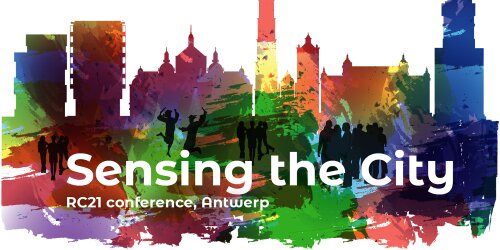
Shaping & Sensing the city. Power, people, place
How we see, hear, feel, smell and perhaps even taste the city, shapes urban life materially, socially and imaginatively. Through our sensory experiences, cities as heterogeneous constellations of places and people acquire meanings, create place attachment or detachment and offer ground for boundary work along lines of class, ethnicity, gender and other categories. How citizens experience fragmentary, unequal and contradictory realities of global urbanity has long been of interest to urban scholars. It inspired Simmel to explore the mental life of urban citizens in the early 20th century metropolis. Ever since, scholars have analysed the embodied experience of urban life, its materiality and the social inequalities produced, reproduced and challenged by it.
Although sensing the city is an everyday urban engagement of citizens, the air we breathe, the sounds we hear or the views we enjoy obviously are shaped by political and economic power. A first theme of this conference is how urban inequalities are affected by and result in unequal access to varieties of sensory experiences. How do segregation patterns, intersectional disadvantages and other forms of exclusion affect who gets to enjoy what in our cities? How do groups with different urban power positions access and create ‘pleasant’ sensory experiences?
The sensory city is also a city of control. One the one hand, governing, regulating and policing sensory experiences is a prerequisite for any political status quo to remain in place and socio-spatial segregation to be (re-)produced. Visibility enhances potential for surveillance. On the other hand, possibilities for resistance, resilience and the imagining of alternatives reside in those figurations and spaces that escape or elude the sensory technologies of the state and private corporations. A second theme of the conference, then, focuses on the policing of urban populations through the governing through sensory interventions as well as on the ways in which urbanites find ways to create an infrastructure of people invisible to and beyond the control of powerful institutions. How do ways in which the city unfolds ‘unseen by the state’ (bound as it is to seeing in fixed categories) impact the shaping of the city through their everyday visibility and claims of presence, in informal markets and other social gatherings?
Both the urban as material site and as a social experience are constituted at the intersection of bottom-up practices to use our senses and top-down strategies of states, corporations and other large-scale organisations. Third, the conference hence invites proposals that focus on the ways in which large-scale organisations shape urban spaces as sensory experiences of visuals, sounds, smells and tastes in modalities that bring matters of place, people and power in dialogue with each other, as is the case in the commercialisation of food festivals, religious rituals or large events?
Shaping, sensing and imagining the city was always mediated through technologies. However, the emerging corporate-driven smart city pushes us to analyse the multiple ways in how we sense and navigate the urban. Some smart city innovations may disempower and reinforce social exclusions, e.g. by surveillance and control, while others may empower citizens and support inclusion of marginalized groups, e.g. by citizen science projects or digital storytelling. As a fourth theme, we invite scholars to reflect not only on the gaze of control and surveillance of smart city and big data, but also on the ways in which these digital technologies are being or could be used to enhance citizen’s symbolic and political ownership of their urban environments.
Senses are also a crucial tool to study the city. As a fifth and final conference theme, we invite contributions addressing in particular the creative blend of established and emerging techniques and technologies for methods to research in urban settings, including notably visual, artistic and auditory methods.